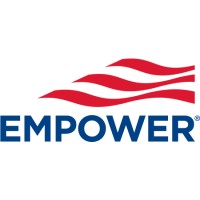
Empower
Built on a foundation of trust, integrity and promise, we proudly serve over 71,000 outstanding organizations and more than 17 million individuals. ¹ We take great pride in helping people with saving, investing and advice, while providing them with the tools and resources they need to help reach their financial goals. We’re continuing to grow — and innovate — every day. Our mission is to empower financial freedom for all. That mission starts by delivering advice, personalized guidance and critical support. We strive to meet the unique needs of everyone we serve and embrace the opportunity to inspire them along their journey. Disclosures: https://www.empower.com/social-media/. ---------------------------------------------------------------------------------------- ¹ As of April 1, 2022.






